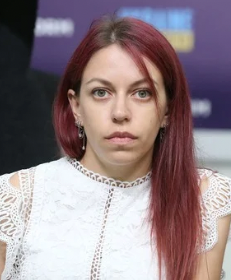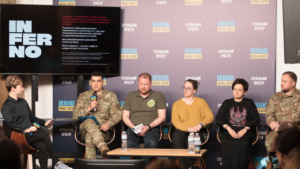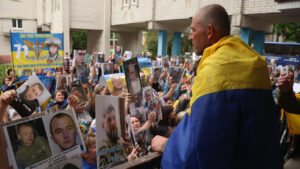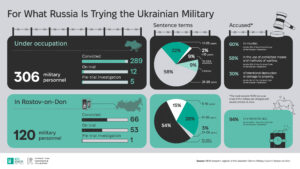Wagner Group. Beyond Accountability

Torture and extrajudicial executions of Ukrainian prisoners of war, attacks on civilians, and seizure of critical infrastructure facilities in Ukraine. MIHR has collected evidence of the Wagner Group’s activities after the full-scale invasion of Russia.
The Wagner Group is a military formation that had been mostly made up of representatives of the former special forces for a long time. Over the past ten years, the group has been involved in military conflicts, and has been deployed to protect specific assets of importance to the Russian Federation or its individual representatives. The Wagnerites usually support warring groups and authoritarian regimes in exchange for natural resources, including the right to mine for gold and diamonds exported to the Russian Federation.
The Wagnerites are active in the Global South: in Sudan, where they support the paramilitary Rapid Support Force, Burkina Faso, where they entered after the withdrawal of French troops, and Mozambique, fighting for the local government against representatives of radical Islamic movements. They were invited to Niger by Presidential Guard General Omar Tchiani, who seized power in the country in the summer of 2023. The presence of Wagnerites has been recorded at gold mines in the Central African Republic (CAR) and Mali, and oil rigs in Libya.
No matter what country the Wagner Group is in, a trail of cruelty and countless crimes always follows it: robberies, rape, torture, murders, particularly of civilians. For example, in 2017, in Syria, Wagner recorded a video at the Al-Shaer gas field, showing the severed head of a local resident who had been tortured beforehand. Representatives of the Wagner Group are suspected of killing nine people at a Chinese-owned gold mine in the Central African Republic. According to locals, the Wagner Group committed this crime to intimidate them. In 2018, Russian journalists investigating the Wagner Group were also killed in the CAR. The Russian authorities stated that the attack took place with the aim of robbery, while the unofficial version is that the crime could have been committed by Wagnerites present in the country.

Wagner Group. Photo: Russian media
At the time in question, the headcount of the Wagner Group did not exceed 6-8 thousand people. However, Russia’s full-scale invasion of Ukraine changed the situation, and the number of Wagnerites increased dramatically. A UK military intelligence report published on January 20, 2023, stated that at that time, the Wagner Group’s personnel involved in hostilities in Ukraine reached 50,000 people. The vast majority of them were inmates serving sentences for crimes in penitentiary institutions of the Russian Federation. In exchange for agreeing to take part in hostilities against Ukraine, they were promised monetary rewards and, most importantly, amnesty.
Today, the Wagnerites’ activities in Ukraine are discussed in the context of the seizure of strategic facilities, sabotage, attacks on civilians, and large-scale warfare in specific sectors of the frontline, in particular near the cities of Popasna in Luhansk Region and Bakhmut in Donetsk Region.
The Wagner Group has been fighting in Ukraine since 2014. The full-scale invasion by Russia forced its top military and political leadership to recognize that the Wagner Group is not an autonomous private military company, not mercenaries, as they are commonly called, but a de facto unit of the Russian Armed Forces, funded out of the federal budget and following orders from Russian special services to conduct military campaigns outside Russia.
Since the beginning of Russia’s full-scale invasion, MIHR has been thoroughly investigating the Wagner Group’s activities in Ukraine. Currently, we have indirect evidence of Wagner’s involvement in mass crimes against civilians, but it cannot be verified due to the lack of access to the Russian-occupied territories of Ukraine. At the same time, MIHR has gathered sufficient evidence of torture, extrajudicial executions, and inhumane conditions of imprisonment of Ukrainian PoWs captured by the Wagnerites. These facts exhibit clear signs of war crimes and require a comprehensive investigation, including at the international level. Some of the facts we have documented are presented in this report. All of them are based on direct testimonies of victims who were held captive by the Wagner Group.
Combat: Wagner’s Endless Resources
Yaroslav Malyk, former platoon commander of the 130th Separate Tank Battalion, tells MIHR how in December 2022 a unit of the Kyiv Tank Battalion was stationed near the settlements of Bilohorivka and Verkhniokamyanske in the Bakhmut sector of Donetsk region. Back in September, these territories were liberated from Russian occupation, but the enemy kept trying to return. For this purpose, the Wagner Group and the special unit of the Russian Guard “Akhmat” were involved.
“You could tell them apart by their ‘chants’. Akhmat fighters shouted: ‘Allahu Akbar’ and ‘Akhmat is power,’ with a distinctive accent. The Wagnerites spoke purely Russian, and their units consisted of completely different people. It was Wagner who fought against us. This was confirmed by intelligence information. At that time, there were no regular units of the Russian Armed Forces in that area – they were in a somewhat different location,” says Yaroslav Malyk. “Our fighters engaged in close combat with the Wagnerites. The distance to the enemy was 15-20 meters. Before that, the enemy fired at our troops with artillery and tanks.”
The serviceman notes that the Wagner Group was well staffed:
“We could tell that their commanders were well-trained military men. It would be wrong to say that they were merely ‘convicts’ or ‘partially mobilized’. Instead, their infantrymen were running back and forth, and they could be killed without too much trouble. There were about ten of us, and there was a platoon of the Wagnerites. It seemed that we had almost destroyed them, but the units that remained there came back because they had hiding places – they reloaded and went back into battle.
We ran out of ammunition and had to retreat. A wing-shaped drone was flying above us, tracking all our maneuvers. They were firing at us with machine guns, mortars, artillery, and a tank. The shelling came mostly from the direction of Zolotarivka.”
The battle lasted about five hours. The group managed to retreat. One soldier was killed then.
Capture of Prisoners: Massive Offensives by the Wagnerites
Ivan Dovhan, a soldier of the 58th separate motorized infantry brigade named after Hetman Ivan Vyhovsky, also fought in the Bakhmut area. He describes a powerful attack and heavy shelling by the Wagner Group. It happened between the settlements of Opytne and Zaitseve in mid-September 2022. Dovhan was taken prisoner then: “There was no artillery fire. Mostly grenade launchers and machine gun fire.” Later, the man spotted people in pixelated vests without insignia. The only thing that caught his eye was colored bracelets: red or pink, yellow or white. And bands. “They had white bands on their legs,” he adds.
Later he learned that the Wagnerites use colored bracelets to identify those with chronic diseases. Red ones are for HIV-positive people, white ones are for hepatitis C carriers.
Oleksandr Koval, also a soldier of the 58th Brigade, was taken prisoner in early November 2022. It happened near the village of Zaitseve. That day, the enemy launched a massive offensive. As in the case of Dovhan’s group, the attack began with shelling. Koval was wounded, they tried to evacuate him, and he lost consciousness. When he came to, people in military uniforms were standing over him. “They had no insignia. I even thought that I was evacuated after all, but I noticed weapons pointed in my direction. I was already expecting to be killed, but it seems that they really needed prisoners that day,” he says.
Koval could not move on his own, he was dragged part of the way, then put in a truck and taken to the nearest headquarters, the location of which he could not specify, and thrown into a basement.
On December 29, 2022, Volodymyr Batsko of the 17th Tank Brigade was captured by the Wagnerites near Bakhmut. He witnessed the mass execution of Ukrainian prisoners of war and was one of three people left alive by the Wagnerites that day. “There were 20 of us at the position, there was no backup, we were running out of ammunition, and we were surrounded. I was held separately about 5-10 meters away from the others, who were bunched together. At that moment, I heard a burst of automatic rifle fire.
I turned around and saw four men standing there shooting our guys, who were bleeding a river. ‘Zeroed out,’ as they put it. I don’t know on what principle they picked the three of us,” Batsko explains.
Later, the man realized that he was not executed because he was a liaison officer – the Wagnerites thought they could extract information out of him. Drivers were also not executed because they “were expected to know the area.”
On February 15, 2023, Viktor from the Chernivtsi Territorial Defense Unit [name changed at the request of the victim] was captured by the Wagnerites. The day before, he and his comrades were transferred to a position in the village of Krasna Hora, Donetsk Region. The soldier also notes that a massive offensive began, and he and his comrade were wounded. The latter died, and Viktor was hiding for another week in the city captured by the Wagnerites. Later, he tried to return to his positions, but they were captured by the enemy. “I was already in plain clothes, the Russians did not immediately realize who I was, but they noticed my phone and realized that I was a soldier. They reported me and were told to bring me back alive. They took me to Soledar, which at that time was under Russian control, or rather under Wagner.
I didn’t speak Russian well, so they beat me for every Ukrainian word. On the way, they told me that they were ex-convicts, that they were recruited in prisons. They were not stormtroopers, they were assigned to guard the positions they had taken,” the man recalls.
Since the beginning of August 2022, the Wagner Group has been trying to take control of the city of Bakhmut in order to free up space for a further offensive by the Russian Armed Forces against Kramatorsk and Slovyansk in Donetsk Region, according to military experts.
Interrogation and Killing of Prisoners: with Particular Cruelty
Oleksandr Koval recalls the beginning of the interrogation at Wagner’s headquarters.
“They showed me the freshly severed heads of our guys, mounted on rebars. One of them said: ‘This is Edik, and this is Valera. They wanted everything to be done according to the Geneva Conventions. Do you want to do it according to the conventions too? There is room for a third,’ he says.
This is not the only known case of Wagner Group members parading the severed heads of Ukrainian soldiers.
In April 2023, it became known from open sources that a Ukrainian prisoner of war had been brutally executed with a beheading. Later, Wagner’s former commander, Andrei Medvedev, who fled Russia and sought political asylum in Norway, gave an interview and said that this crime was committed by Wagner’s men. Ukrainian law enforcement agencies cannot confirm this fact because Medvedev refused to cooperate with them. But his public statements are duly recorded.
Yaroslav Malyk, speaking about his murdered comrade, says that they did not manage to take his body away immediately, but only two days later.
“What I saw was shocking. The body was undressed, only underwear remained on it, the rest of the clothes, body armor, and helmet were missing. In addition, the body had been mutilated: the head had been cut off and smashed,” he adds.
The interrogations recalled by the Ukrainian military were brutal.
Ivan Dovhan was interrogated by a man with the call sign “Dykyi” [“Wild One”]. “To my understanding, he was in charge of those with whom I was at the position. He took a bat. He smashed my left leg and right knee. The Wild One looked like a Chechen. They were all smoking hookah in that basement,” says the 58th Brigade fighter.
Some of the Ukrainian soldiers who fought alongside Ivan were killed in action, and the Wagnerites took their documents. Some of the papers said that they had served abroad in the past, for example, in the countries of the former Yugoslavia.
“So we were considered representatives of a foreign legion. Then a completely different interrogation began. They beat me so hard that I was blue. I could not move my legs or arms. They asked me the same thing: where are the foreign legions and HIMARS? I said I didn’t know. They knocked out my teeth with a stun gun.
It’s hard to recall it. Excuse me, my hands are starting to shake,” Dovhan says.
“After I was promised a place on the rebar, they started performing what they call ‘Eurodelivery’,” continues Oleksandr Koval, a soldier with the 58th Brigade. “They wrap you up using wide scotch tape, with your arms at your side, with the tape going all the way to your knees. You find yourself as if in a cocoon. And they start beating you. At first you feel intense pain, but then everything goes numb. I thought I would lose my hands.” The Wagnerites did not intend to get any information out of the prisoner, as Oleksandr says, they were having fun. Then they loaded me into a truck and drove away. They beat me all the time on the way.
Volodymyr Batsko was also interrogated at positions a few kilometers from the place where he was captured by the Wagnerites. He recalls this period as follows: “They tried to shoot me with an automatic rifle. With blanks. They interrogated me with a hammer. They beat me on the arms. They also strangled me with a belt. Just for fun.”
Some of the interviewed Ukrainian prisoners were taken by Wagnerites from basements near the combat positions to Soledar, where their headquarters was located in the basement of a two-story building near the entrance to the city. Viktor says that there were a lot of computers and maps there, which were used by the Wagnerites to monitor Ukrainian positions.

Wagner Group leader Evgeny Prigozhin and representatives of the military company. Photo: screenshot from the video
“They didn’t even try to hide anything from us,” adds Ivan Dovhan. “The monitors showed all of Bakhmut as if in the palm of our hands. Drones were hovering everywhere, I saw them too. There were some powerful radio stations, because we could hear them, and they were asking questions: “What should we do?” And they would give them location updates. They were very pleased that they were “the best unit in Russia”. Those words were constantly heard.
On April 17, 2023, Ukrainian soldier Andriy was also captured by the Wagnerites near Bakhmut. He was taken for interrogation:
“There were six men with a pistol, a baton, a bat, pliers, scissors.
They untied my eyes, removed the scotch tape, and said: “Show us your positions”. I showed the one that was already completely destroyed. One of them said: “You don’t give us enough information, we don’t need you like this, we’ll shoot you now”.
And then he asked me where I was from. I said that I was from the village of Zorya in Rivne region. “Oh, my wife hails from those parts,” he replied, “You’re lucky today. You will live for now.”
Later, Andriy was interrogated again, this time by the Wagnerites, who used torture. “At first they beat me with bats and automatic rifles. They asked if I remembered anything. Then ‘Korean’ (either his call sign or he was really Korean because he had narrowly slit eyes) came up to me and cut off my left ear with a knife or scissors. I started bleeding heavily, and the older man said: ‘Throw him out of here, because he’s going to bleed all over the place.’ They threw me out into the corridor and started beating me again,” the former prisoner of war recalls.
The Wagnerites wanted the man to admit that he was a machine gunner. ‘If you don’t tell us, we’ll rape you, check your knees, check your kneecaps to see if they are strong or not,’ they shouted. They wanted to tear out my nails, but they tied my hands too tightly and they were swollen, so they couldn’t reach my nails. Then the man who said his wife came from Rivne Region approached. He asked: ‘Who is this?’ He was told that I was brought for interrogation. He came up to me and said: ‘Oh, Andriy, you? What are they doing to you?’ Thanks to him, the torture stopped. One of them said: ‘Oh, Andriy! Well done, you didn’t lie to us. So, you’ll live, we’ll take you to your family,’ Andriy adds.
Another soldier interviewed by MIHR was set on fire by Wagnerites after his interrogation. Before that, the man was tied up and doused with gasoline.
“My leg, arm, and a fleece shirt on my body were on fire, and I was wearing a turtleneck under it, which did not catch fire, so I did not sustain severe burns. When the fire started to reach my face, chin and my ear started to burn, I fell to the ground trying to put out the fire.
Then they threw some kind of cloth over me and started pouring water on me,’ says the former prisoner, who requested not to be named.
After that, the man was transported in a state of shock to another place where the Wagnerites’ higher command was located. There he was forced to kneel, and the interrogation continued. Then he was taken somewhere else again.
Wagner’s Prison: a Shoe Factory in Pervomaysk
One of the main locations where the Wagner Group took Ukrainian prisoners of war is situated in the city of Pervomaysk, Luhansk Region, on the premises of a former shoe factory. It is 70 kilometers from Bakhmut.
“In the basement where we were held, we saw shoe parts. The guys who had been there longer than me said it was a shoe factory,” says former prisoner Andriy.
The Wagnerites converted several rooms of this factory into cells, mostly in the semi-basement. Each of them held 20 to 60 people at a time. The cells were damp rooms, sometimes without lighting, beds, or chairs. The prisoners mostly slept on wooden pallets, covered with pieces of cloth. Empty water bottles served as toilets, and there were no amenities for washing. The prisoners were fed Russian army dry rations once a day, one for 2-3 prisoners.
“We were held in the basement, with rooms measuring three by two meters. My room had a three-level bunk bed. The window was boarded up with plywood, and a small hole was cut in one place to let fresh air in. That window was at ground level, and the lower parts of tree trunks were visible through the hole. At first there were seven of us, then three were taken away.
We were guarded by Wagnerites. Young guys, 20-22 years old. They wore no insignia, just their uniforms, caps and masks. One of our comrades said something about the rights of prisoners of war, so they took him out, beat him for I don’t know how long, brought him back and dumped him,” says the former prisoner.
One of the cells was converted into a makeshift medical station. A witness interviewed by MIHR said that there was a local surgeon there. “Many prisoners had festering fingers after being tortured with a hammer, but they were not treated, only given iodine and bandages. So when nothing else worked, the fingers were amputated. “There was a doctor who kept asking in Russian: ‘Who is in pain and what hurts?” He replied to complaints: ‘Be thankful for being alive’. And he would walk away,” adds Ivan Dovhan.
Only a few prisoners could go outside to work. The rest did not know whether it was day or night, as they were often held in complete darkness.
“They came into the cell and called, for example, ten people. We had to unload the humanitarian aid,” Volodymyr Batsko recalls.
There, 80% of them could not do anything because they were gravely wounded. One of them, an older man, died in front of me. The Wagnerites cut off his right ear, he had severe bruises. A surgeon came and inserted a tube into his lungs. He was lying there like that for three days.
And then he came to his senses and said: “I want some tea, please make it.” By the time the guys heated water with dry alcohol and made tea, he had no pulse. They called the guard. He came and said: ‘What, again?’ He was not even surprised. He threw the black bag. The man was taken away someplace.”
There was a doctor among the captured Ukrainians. The Wagnerites also used him to administer medical care to Ukrainian prisoners. “It was hard, the medicines were running out, and you had to distribute them. I chose those who were in worse shape and gave them antibiotics, it was mandatory. I had 32 wounded in one room,” he says.
There is no telling how many prisoners of war the Wagnerites held in Pervomaysk. In addition to the shoe factory, witnesses say that Ukrainians were also held in neighboring buildings.
Exchange: Under Prigozhin’s Personal Control
The military personnel interviewed by MIHR emphasized that the Wagnerites kept all prisoners under strict control. Also, only representatives of this group interrogated their prisoners and compiled exchange lists. In addition, after the exchange the Wagnerites handled those whom Ukraine handed over to them in exchange for members of the Ukrainian Armed Forces.
“I witnessed two exchanges. Those captured by the Wagnerites, and among them were soldiers from the regular army, were not immediately handed over to Russia. They went through a certain filtering process. At first, they sat in cells near us and were interrogated. They were also photographed and not given for some time. I heard people say: ‘Those in Ukrainian captivity were fed a hundred times better and slept on beds.’
MIHR estimates that between September 2022 and June 2023 at least 11 exchanges with the Wagnerites took place, mostly in the Bakhmut area. The Wagner Group handed over those it held captive and received not only Wagnerites, but also representatives of the Russian regular army, which further demonstrates the Wagner Group’s ongoing strong ties with the Russian Armed Forces.
The last exchange involving Ukrainian soldiers held by Wagner took place on June 11, 2023, a few weeks after the announced withdrawal of Wagner’s men from the Bakhmut area. The two largest exchanges happened on April 16 and May 25. At that time, Ukraine managed to bring back 130 and 106 of its servicemen, respectively, the vast majority of whom had been held captive by Wagner.
On the eve of the May exchange, the prisoners of war recall that they were all gathered and brought to an unknown location. Witnesses suggest that it was the premises of a salt mine. They lined them up there. Evgeny Prigozhin, a close associate of Russian President Vladimir Putin at the time, came in. He was introduced as the head of the Wagner Group.
“He said: ‘You see how kind we are. We didn’t beat you, we didn’t cut you, we didn’t cut off your fingers or ears,’ the former prisoner of war recalls, adding: “And half of those in the room were crippled by the Wagnerites, but what are you going to tell him?
And he said: ‘That was a warning to you. If you end up in my captivity for a second time, this won’t happen again. I will shoot you immediately’.
After this meeting, the soldiers were loaded into trucks. “They radioed our guys and said we were approaching. We got into our trucks in a field outside Bakhmut, and they got into theirs. And we went our separate ways,” the witness adds.
It remains unclear whether the Wagnerites have returned all the captured Ukrainian soldiers. MIHR knows for certain that some of those who were used as servants on the territory of the shoe factory in Pervomaysk – preparing food, delivering it, cleaning – were taken by the Wagnerites with them. “To my understanding, they do not give back medics either, but I was transferred with the wounded during the last exchange,” says the former captured medic. MIHR assumes that those who were not exchanged were transferred by Wagner to the provisional general exchange fund, some of whom are currently being held in pretrial detention centers in Donetsk.
Wagner’s “Evolution” after the Invasion of Ukraine
The Wagner Group has been involved in the war against Ukraine since 2014. It was active in 2014-2015, in particular in the battles near Debaltseve.
Before February 24, 2022, and the full-scale invasion, some members of the Wagner Group were named in criminal proceedings initiated by Ukraine, specifically as war crime suspects. Later, the leaders of the unit, the founder of the Wagner Group, Dmitry Utkin, a Central Intelligence Directorate special forces officer with the call sign “Wagner,” and Evgeny Prigozhin, were served with notices of suspicion. In particular, they were charged with encroachment on the territorial integrity and inviolability of Ukraine (Part 3 of Article 110 of the Criminal Code of Ukraine) and waging an aggressive war against Ukraine (Part 2 of Article 437 of the Criminal Code of Ukraine).

Evgeny Prigozhin, leader of the Wagner Group
Since the beginning of the full-scale invasion, the Wagner Group has become more active in Ukraine. Initially, it operated in separate groups in certain areas, in particular in the summer of 2022 in Kharkiv and Luhansk regions. Individual representatives—seasoned military officers who formed the core of the Wagner Group and who had participated in military operations in Africa and Asia (Syria, CAR, Sudan, Libya)—were involved in such operations. They usually followed in the wake of regular units of the Russian army. With their participation, the Russians were able to capture the city of Popasna in Luhansk Region. Wagnerites were also used as stormtroopers. Moreover, the resources of this group could be quickly replenished.
Moreover, representatives of the Wagner Group may have participated in combat operations in specific population centers and in the seizure of infrastructure facilities. For example, the Defense Intelligence of Ukraine claims that the Wagnerites are involved in laying of mines at the nuclear units of the Zaporizhzhia NPP in occupied Enerhodar. Also, in the summer of 2022, Ukrainian military intelligence stated that it was the Wagner Group, in coordination with the leadership of the Russian Ministry of Defense, that was involved in staging the explosion on July 28, 2022, on the premises of the former penal colony No. 120 in Olenivka, Donetsk Region, which killed almost six dozen captured soldiers of the Azov regiment. Currently, MIHR has no confirmation of this information.
In July 2022, the first reports began to appear that the Wagner Group was recruiting convicts from Russian prisons. The recruitment scheme is the same: representatives of the Wagner Group would visit penal colonies in the Russian Federation, several dozen of them, and invite inmates to join the Wagner Group. The convicts were promised a monetary reward, clothing, food, medical treatment, and most importantly, they were guaranteed subsequent amnesty. At the same time, the first convicts who volunteered to fight against Ukraine flew as paratroopers to the border with Ukraine in Rostov Region. Then they were transferred to the area of Bakhmut, Donetsk Region. The highest political and military leadership of the Russian Federation tasked them with capturing the entire territory of Donetsk Region. In August-September 2022, Prigozhin personally joined the recruitment of prisoners in the colonies. In particular, this was recorded on video – the leader of the Wagnerites appeared at Penal Colony No. 6 of the Republic of Mari El in the Volga Federal District of the Russian Federation. Throughout the fall and early winter of 2022, recruitment for the Wagner Group in Russia was happening on an industrial scale. And all this was done, as Prigozhin put it, “to bolster Russia’s defense capabilities.” For this purpose, the Russian authorities allowed advertising and recruitment in 42 cities, including Moscow. According to various sources, they managed to recruit about 20,000 fighters, and another 7,000 were former members of special units of various law enforcement agencies.
At the same time, the Wagner Group had armored vehicles at their disposal, which they did not have during operations in Ukraine and the Global South. They used them in the Bakhmut area.
Crimes Against Civilians: Challenges of Investigation in Ukraine
The Office of the Prosecutor General has recorded several facts of Wagnerite attacks on civilians in Ukraine. Specifically, in May 2022, five servicemen of the 37th Separate Motorized Rifle Brigade of the 36th Combined Arms Army of the Russian Armed Forces and three members of the private military company Wagner, who operated in the Kyiv sector, were served notices of suspicion (in absentia) of cruelty to civilians (Part 1, Part 2 of Article 438 of the Criminal Code of Ukraine). Three surnames are mentioned among the Wagnerites. Their crimes involved the abduction, torture, and murder of Olha Suhenko, the head of the village of Motyzhyn in Makariv community, her husband and son. It also refers to the fatal wounding of Yaroslava Lytvynenko, a resident of the village of Motyzhyn, and the capture of her father Mykhailo.
Prosecutors argued that the residents of the village assumed that they had seen the Wagnerites because they were wearing uniforms without insignia and were heavily armed.
At the same time, MIHR managed to talk to Mykhailo Lytvynenko, who was held hostage by the Russians for nine days after his daughter’s murder. A year and a half has passed since then, and today the man says:
“They were not Wagnerites. The information that they were Wagnerites was spread by the Prosecutor General’s Office. The Wagnerites have their own patches and emblems. But the military with whom I spoke did not have such emblems.
Their uniforms were different from those of ordinary Russian soldiers, somewhat similar to ours. They had good assault rifles with silencers, with optical sights, pistols with silencers. I think it was a platoon or a reconnaissance unit. But I can’t say that they were Wagnerites.” The investigation into this episode is ongoing.
In April and September 2023, several videos appeared online in which Wagnerites told about the killing of Ukrainian children, teenagers, and adult civilians in Soledar and Bakhmut, Donetsk region. They were posted on YouTube by the Russian organization Gulagu.net. At first, two Wagnerites say that in early February 2023 they received an order to “shoot without words” everyone aged 15 and older, so they opened fire when civilians wanted to cross into the occupied territory. One of them recalled how he “wiped out” the basement of a nine-story building with 300-400 civilians, about 40 of whom were children. Later, two other Wagnerites also recalled an order to clear settlements near Soledar and the killing of dozens of civilians in late November and early December 2022. All of them also recalled that they were ordered to throw grenades at civilian homes.
MIHR tried to find confirmation or refutation of the Wagnerites’ claims about the killing of civilians. To do this, we interviewed several residents of Soledar who left the city at different times and had their own sources of information in the area.
“In January of this year, 559 people remained in Soledar, and 140 in the neighboring Paraskoviyivka. After the town was captured by the Russians, these people were taken to Pervomaysk, Luhansk region, and Shakhtarsk, Donetsk region. These are two settlements where local residents from the captured cities, including Bakhmut, were taken for ‘filtration’.
As of today, I know that about five missing residents of Soledar are being searched for. However, I have no information about the executions of civilians,” said Serhiy Goshko, head of the Soledar city military administration, in an interview with MIHR.
Natalia Tyshchuk, a local resident of Soledar who left at the beginning of the full-scale invasion, confirms that those who remained in the city were taken by the Russians to territories that are not controlled by Ukraine. “Indeed, during the shelling, people were hiding in basements, and the Russians brought them out and took them away,” she explains, adding: “I also know that families are searching for several missing people. My acquaintances say that the basement where people were hiding was on fire, and that the Wagnerites shot the guys who were there. Allegedly because they were helping the Ukrainian military. But this is a rumor, no one knows the real facts.”
The Office of the Prosecutor General informed MIHR that the above-mentioned facts were also recorded – the testimony of the former Wagnerites prompted the Office of the Prosecutor General to enter information into the Unified Register of Pretrial Investigations under Article 438 of the Criminal Code of Ukraine – violation of the laws and customs of war, but it is currently impossible to verify this information because Soledar and surrounding settlements are under occupation. In addition, the Wagnerites who were captured by Ukrainian forces did not talk about it. The information can be verified after the de-occupation of these territories, as there have been similar examples in history after a full-scale invasion – massacres in Bucha, Kyiv region, and Izyum, Kharkiv region, became known only after Ukrainian defense forces recaptured them.

Prigozhin and representatives of the Wagner Group. Photo: Russian media
However, it is safe to assume that representatives of the Wagner Group could still commit such crimes in Ukraine, as similar examples of torture and murder of civilians are known in Africa and Asia. A recent report by ACLED suggests that Wagnerites may have been involved in the abduction, rape, and murder of two thousand civilians in the Central African Republic and Mali. All of them lived near mining sites, destroying entire villages and setting fire to houses where women and children were trapped.
Threat of Impunity
On June 27, 2023, Russian President Vladimir Putin admitted that the Russian government is fully funding the Wagner Group’s activities out of the state budget. “From May 2022 to May 2023 alone, the state paid 86 billion 262 million rubles [approximately USD 860 million – MIHR] to Wagner in salaries and incentive payments. We have always treated the soldiers and commanders of this group with great respect,” Putin said.
Instead, Russia’s long-standing concealment of the fact that the Wagner Group is actually subordinated to the Russian Armed Forces is fully consistent with the Kremlin’s policy of creating an illusion in the international arena that Russia is not involved in conflicts and is dissociating itself from war crimes committed by Wagnerites, in particular during the war in Ukraine. Despite the fact that the Wagner Group is under the effective control of the Russian Federation, Moscow continues to turn a blind eye to even the most brutal and heinous crimes committed by Wagnerites, all of which remain unreported to Russian law enforcement agencies. In 2021, the brother of a Syrian man brutally murdered on camera tried to get the Russians to investigate the crime, but the Investigative Committee of the Russian Federation refused to initiate proceedings. Later, Russian courts of two instances confirmed the “legality” of the law enforcement agency’s decision.
At the same time, as of October 2023, MIHR is not aware of any results of investigations into the Wagner Group’s crimes in Ukraine and against Ukrainian prisoners of war, either at the national or international level.
The impunity of the members of the Wagner Group contributes to their utter disregard for basic standards of human rights, treatment of civilians and prisoners of war.
So far, MIHR has made public only some of the war crimes and, possibly, crimes against humanity committed by the Wagner Group in Ukraine. We are convinced that the absence of effective justice against the Wagner Group and other hybrid military formations under the effective control of the Russian Federation will scale up their crimes, contribute to violations of the customs of war, and threaten peace and security in the world.











